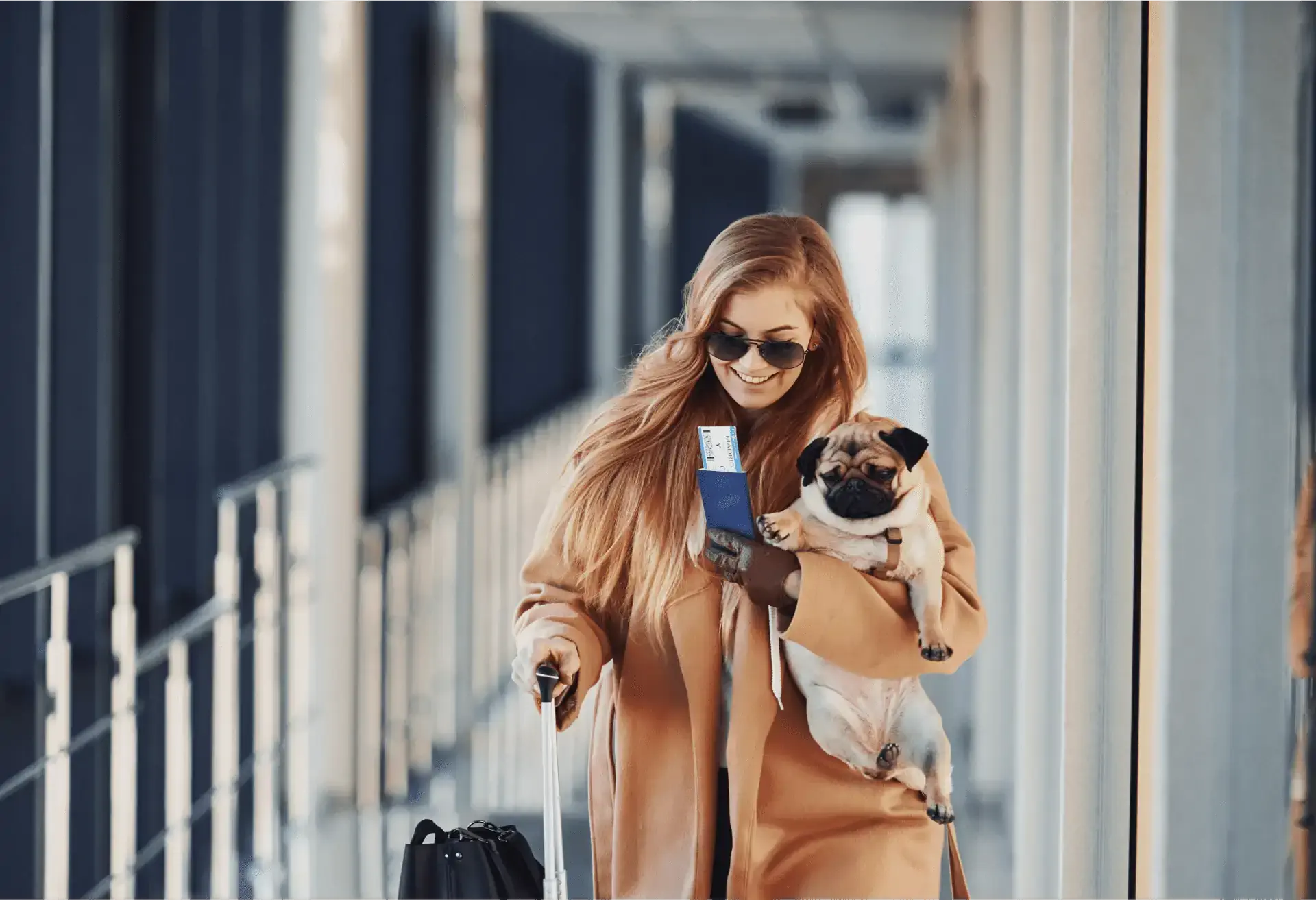Travelling with pets can be a nerve-racking adventure for first-time fliers – and even more so for their owners. But preparing ahead, from organized feeding schedules to vet visits, is a strategic way to guarantee you and your furry friend will be fine 35,000 feet in the air.
Many airlines have specific regulations regarding what types of animals can fly, so be sure to check with your carrier before booking. When it comes to cats and dogs – from kennel fee considerations to ID tags – Cheapflights has compiled a list of the top 10 tips for flying with pets to help owners and, in turn, their four-legged companions fly stress-free.
Calculate the costs
The charges associated with carrying pets onboard – whether checked or in the cabin – add up quickly. Research airlines’ different rates ahead of time and factor the canine and feline fees into the total cost of airfare – both yours and your pet’s – before pressing book.
Call the airline
Start by checking your airline’s website for regulations, but also get a verbal confirmation that you and your pet are set to fly. Many airlines limit the total number of animals allowed within the cabin on each flight, so it’s important that a reservation be made sooner rather than later –and confirmed 24-48 hours before departure.
Rehearse nearby
First-time fliers are sometimes overwhelmed – justifiably – by a 35,000-foot ascent, so it’s important to schedule trial runs before the big day of flight. If you live in a city, take your pet for a ride on the subway or other modes of public transportation to familiarize it with both the movement and the crowds. Since the American Veterinary Medical Association frowns upon sedation – the combination of tranquilizers and high altitudes can prove fatal – it’s best to travel with calm, drug-free pets.
Visit the vet
Some airlines don’t require vaccination or health and veterinarian documents for animals on domestic flights. It’s still recommended, though, that pet owners visit their vet before trips and carry up-to-date medical records and a first aid kit (gauze, tape, eye dropper, etc.) on flights. Many airlines require you to carry a health certificate issued less than 30 days before departure. To play it extremely safe, get acquainted with local veterinarians at your destination in case your cat or dog gets sick or injured while away.
Prepare the kennel
Squeezing your dog or cat into the claustrophobic kennel you purchased when they were just wee ones won’t do on a flight, whether short- or long-haul. Invest in a container that leaves your pet room to turn and stand up without hitting its head on the top of the carrier. Different airlines have different dimension requirements, though the USDA has laid out universal must-haves: food and water dishes, “Live Animal” stickers, upright arrows, bedding and other necessities. Remember to include objects that the animal is familiar with, whether it’s a favourite toy or blanket from home.
Attach ID tags
In case of separation, it’s important to mark your pet – as well as carrier – with proper ID tags. Attach to the kennel a note with your flight number, contact information and pet’s name. Do the same on your pet’s collar; remember that a reachable phone number is the most important detail. Many animals nowadays have microchips implanted that shelters can scan to identify the dog or cat within a national database. Tattooed IDs are also an option for pets, and handy when registered with the National Dog Registry.
Exercise the day before
Spoil your dog or cat the day before travelling with extra exercise, the goal being to wear them out. For dogs, that means longer walks and high-energy activities; for cats, a few extra games of Claw the Rope could do. Exhaust your travel companion so the next day’s flight is met with relaxation.
Pack food and water
Just like us, dogs and cats get dehydrated on flights. A handy tip: Freeze water before you leave home to ensure your furry friend has water in his dish by the time you both pass through security. United reminds passengers that, according to the USDA, pets must be offered food and water within four hours of checking in for a flight. On United flights, a signature is required to show when your pet was last offered nourishment.
Withhold food
A silly suggestion, considering the aforementioned tip. Of course you can pack food and snacks for your animal’s voyage, but it’s also important to avoid giving any edibles to your pet for a matter of hours before departure. Nerves are a guarantee, and not just for finicky felines. Queasiness, on the other hand, doesn’t need to be.
Prepare for the unexpected
Flexibility and patience are virtues that every traveller should possess. The same holds especially true when flying with pets. Whether your flight is delayed, your dog gets sick mid-flight, or your cat decides he can’t wait for the kitty litter – taking pets up in the air can be tough. Bottom line: Plan for the worst and expect the best. Bon voyage!
(Images: bravoinsd)




